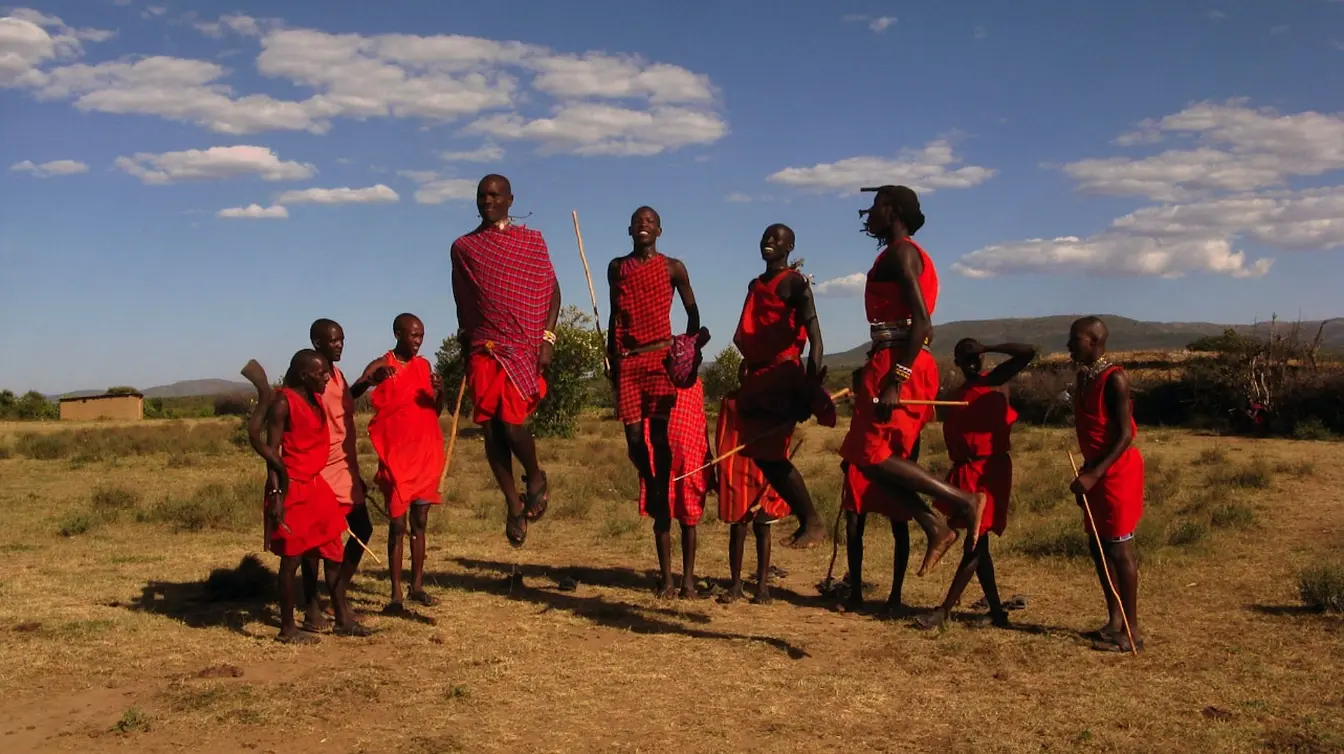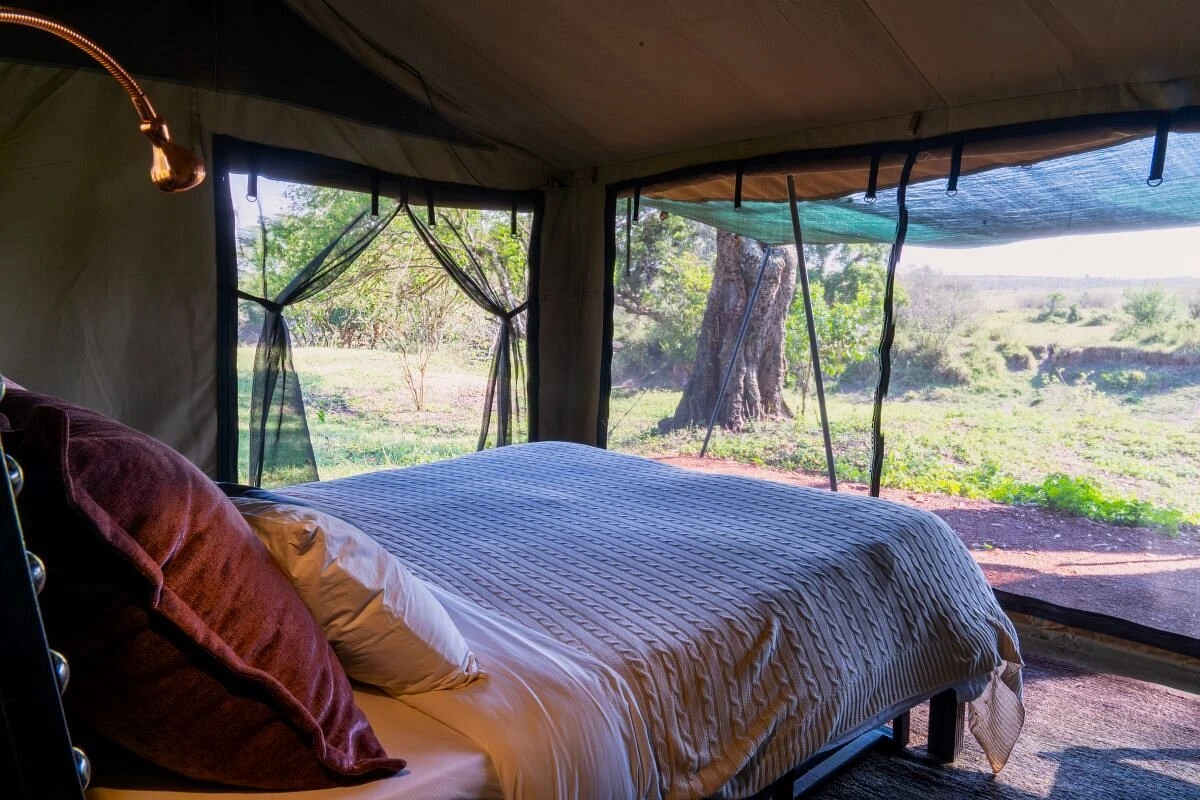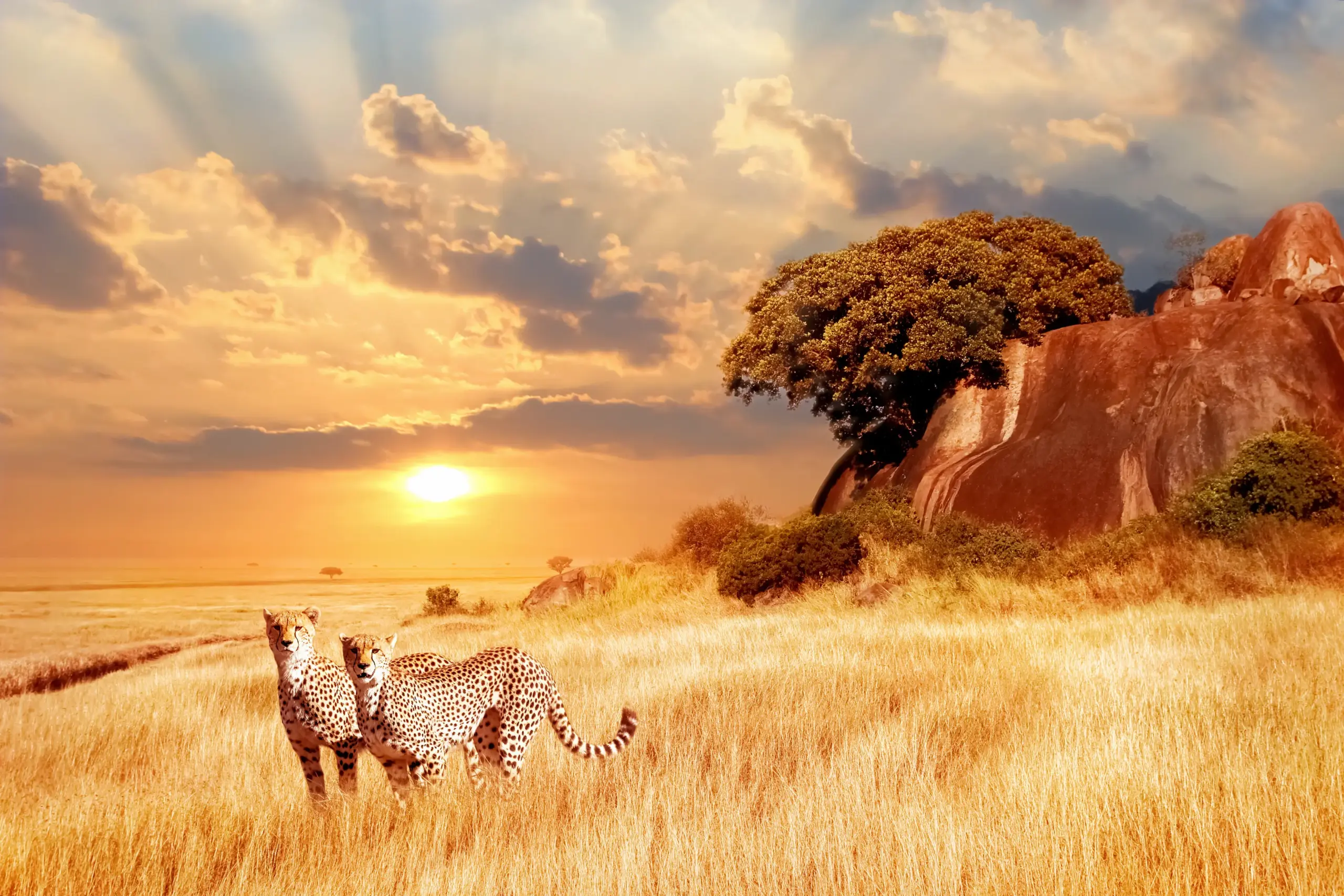Wildlife in Masai Mara National Reserve and conservancies - Kenya
Beyond the famous scenes of wildebeest and zebras sweeping across the plains, the Maasai Mara National Reserve delivers an extraordinary safari experience. Bordering Tanzania’s Serengeti National Park, this untamed wilderness provides prime opportunities to encounter most of the ‘Big Five’ in their natural habitat. Yet, the marvels don’t end there—venturing into the Mara Triangle unveils a fascinating array of lesser-known but equally captivating species that call this diverse ecosystem home.
Wildlife in Masai Mara: Video
The Masai Mara: Nature’s Grand Masterpiece
For many travelers, an African safari is synonymous with spotting the legendary ‘Big Five.’ In the Masai Mara, lions, elephants, leopards, and Cape buffalos are common sights, drawing awe from visitors. Rhinos, however, are more elusive, making each sighting a rare privilege. Interestingly, the term ‘Big Five’ originated from hunting culture, signifying the challenge of tracking these animals rather than their size. Today, they are sought after for breathtaking wildlife photography. But the Masai Mara, located in southern Kenya, offers much more than the ‘Big Five’—this vast wilderness is home to an incredible array of species. Here’s a look at some of the most iconic animals thriving in the greater Maasai Mara ecosystem.
Lion (Panthera Leo)
The lion, often hailed as Africa’s ‘king of the jungle,’ inspires both admiration and fear with its immense power, agility, and formidable presence. In the vast Masai Mara National Reserve and its surrounding conservancies, an estimated 850 to 900 lions roam freely across the sweeping plains. This ecosystem is celebrated as one of the finest places on Earth to witness these magnificent predators in the wild. As the most social of the big cats, lions live in prides typically made up of fifteen to twenty individuals. A pride generally consists of up to three males, multiple adult females—including a dominant matriarch—and a number of sub-adults and cubs. Males stake claim to vast territories spanning anywhere from 30 to 400 square kilometers, fiercely defending their domain. Though they sometimes take part in hunts, it is the lionesses who are the primary hunters, occasionally enlisting males to tackle larger prey. Their diet mainly consists of wildebeest and zebra, though they also target warthogs and buffalo when food is scarce, particularly outside the great migration. Notably, lions are known for their extended periods of rest, often sleeping for nearly twenty hours a day. The Masai Mara is also home to the world-famous ‘Marsh Pride,’ a legendary group of lions that gained global recognition through the BBC’s celebrated documentaries Big Cat Diary and Dynasties.
Elephant (Loxodonta Africana)
The African elephant is one of the most commonly sighted members of the ‘Big Five’ in the Masai Mara. As the planet’s largest land mammal, it can grow up to 7.5 meters long, stand nearly 3.5 meters tall, and weigh an astonishing six tons. Despite the persistent threat of poaching due to their valuable ivory, conservation efforts by the Kenya Wildlife Service and the Mara Conservancy have led to a rise in their numbers. Highly intelligent and deeply social, elephants form tight-knit family groups led by a dominant female known as the matriarch. These herds consist of adult females, known as cows, and their offspring, while mature males tend to roam alone or in small bachelor groups. Typically, family units contain around ten members, though multiple herds sometimes merge into clans of up to 70 elephants, guided by a single leading female. As herbivores, they rely on a diet of grasses, bark, roots, and fruits, consuming up to 300 pounds of food each day. The Masai Mara, a world-famous game reserve, provides a remarkable setting to witness these extraordinary animals in the wild.
Leopard (Panthera pardus)
Lions impress with their power and commanding presence, while leopards are admired for their grace and elusive movements. Despite the Mara’s healthy leopard population, these secretive felines are rarely seen. Listed as vulnerable on the IUCN Red List, they struggle with habitat destruction and the spread of human settlements into their territories. Leopards lead solitary lives, hunting primarily at night. They thrive in wooded savannahs and rocky landscapes but are frequently spotted resting in trees. From these high perches, their sharp eyesight, acute hearing, and strong sense of smell help them locate prey, ambushing targets from above. They favor antelopes and baboons, often dragging their kill into the treetops to keep it away from scavengers.
Rhino (Rhinocerotidae)
Kenya houses both the black and white rhinos, with white rhinos being more commonly seen, especially near Lake Nakuru. Despite their names, the two species show little difference in color, though black rhinos tend to be smaller and more temperamental. The Masai Mara, particularly the Mara Triangle, hosts a significant black rhino population, yet sightings on a Masai Mara safari remain rare. Their numbers in the reserve range from 35 to 50, with some occasionally venturing into the Serengeti. Black rhinos are typically solitary, with the strongest bond existing between a mother and her calf. Although their eyesight is poor, leading them to charge at sudden movements, their hearing and sense of smell are remarkably sharp. In the wild, black rhinos can live for 35 to 40 years. As adults, they reach about one and a half meters in height, three and a half meters in length, and weigh between 850 and 1600 kilograms. The presence of these iconic giants, often in sizable groups, enhances the Masai Mara’s captivating wildlife experience.
Cape Buffalo (Syncerus caffer)
Feared as one of East Africa’s most dangerous animals, the Cape Buffalo—also called the African Buffalo- is infamous for its volatile temperament. Lone males, tipping the scales at nearly 800 kilograms, are especially imposing. Meanwhile, females are known for their intense maternal instincts, displaying fierce aggression to shield their calves. In the Mara, these powerful herbivores usually travel in herds exceeding 100 members, often congregating near water sources, especially when drought conditions persist.
Masai Mara Great Wildebeest Migration
The Masai Mara’s most famous natural phenomenon is the iconic ‘Great Migration.’ Every year, vast herds of wildebeest, zebras, and gazelles embark on a dramatic trek from the Serengeti Plains to the Masai Mara, crafting an unforgettable wildlife spectacle. This epic journey typically kicks off in the Serengeti around July and August, with the animals arriving in the Masai Mara during the same period. One of the most heart-pounding moments is the perilous Mara River crossing, where lurking crocodiles eagerly await their next meal. By October, the migrating herds gradually return to the Serengeti. Since nature operates on its own timeline, pinpointing the migration’s exact schedule is difficult. However, for the best chance to experience this mesmerizing event in the Masai Mara, September and October are ideal months.
Masai Mara birdlife
As you explore the Masai Mara, it’s easy to be captivated by the vast savannah stretching before you-but don’t forget to look up. The skies above the African Plains are alive with over 500 bird species, adding another layer of wonder to your safari. Skilled guides and trackers will help you spot these feathered gems, from the striking Fischer’s Lovebird, adorned in green and yellow, to the towering Kori Bustard. This ecosystem plays a crucial role in bird conservation, with the Masai Mara renowned for its raptors, home to 57 species, including the awe-inspiring Bateleur eagle. Birdwatching is a rewarding experience year-round, peaking between November and April during the wet season when European migratory birds arrive. Learn more about the incredible birdlife of the Masai Mara.
Your Ultimate Masai Mara Safari Awaits!
Experience the breathtaking wildlife of the Masai Mara with Kenya Luxury Safari. Whether you dream of witnessing the Big Five, the Great Migration, or the region’s vibrant birdlife, we’ll craft the perfect safari just for you. Send us an email at [email protected] | [email protected] or call/ Whatsapp us at +254 748 258880 and we’ll get back to you ASAP!
You can also reach us through social media via:
Welcome to AjKenya Safaris
Thanks for stopping by! We’re excited to help you plan an unforgettable safari.
- Phone: +254 748 258880
- WhatsApp: +254 748 258880
- Email: [email protected]
- Email: [email protected]





